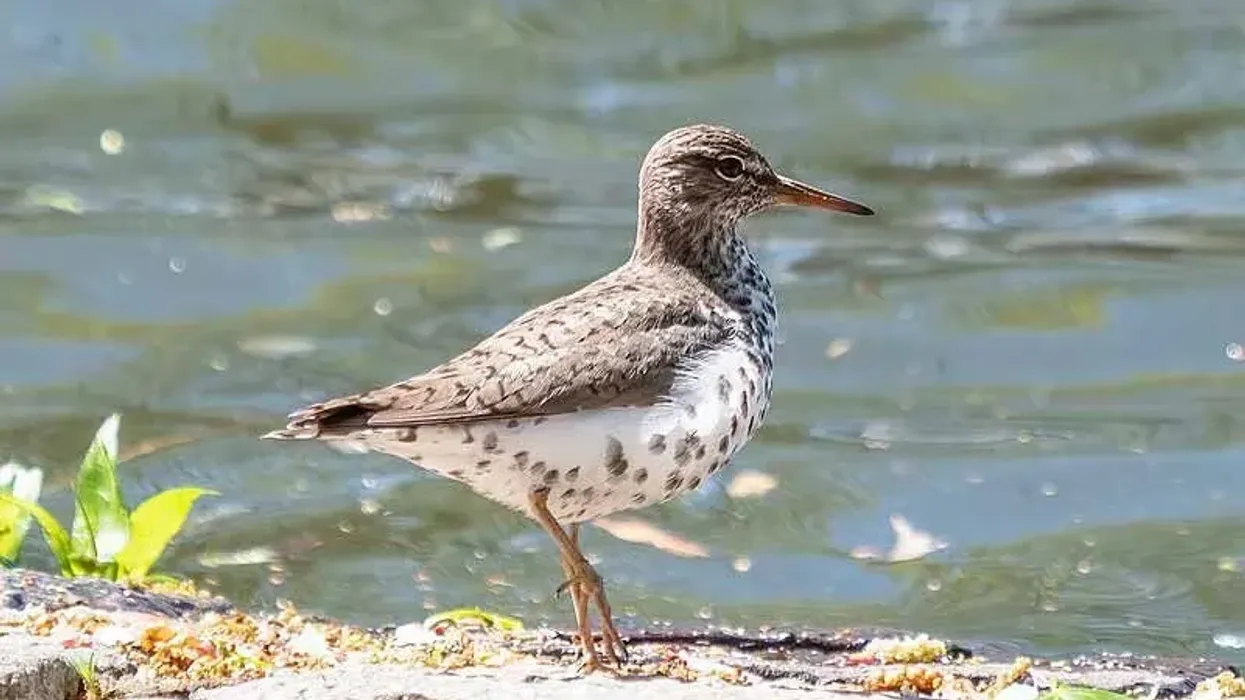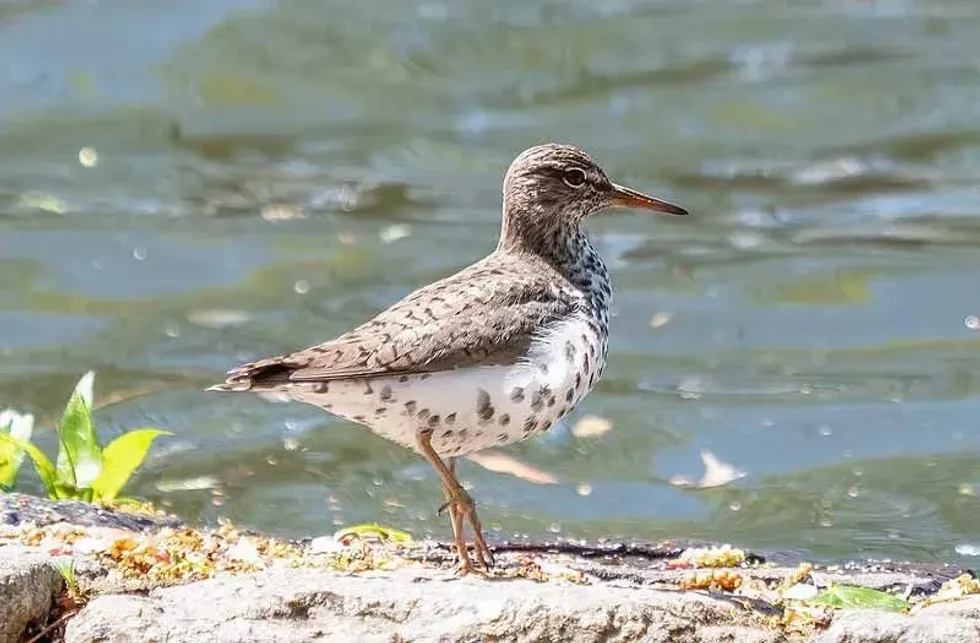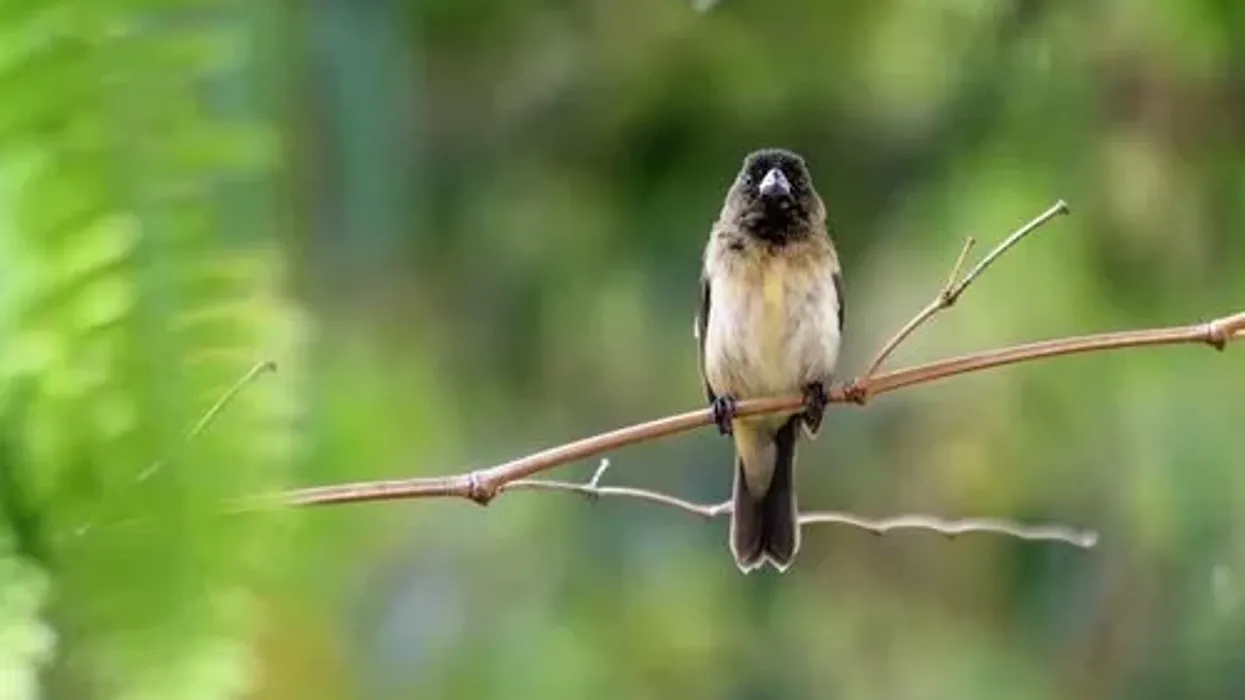Spotted sandpipers, of the order Charadriiformes and family Scolopacidae, are birds from the Animalia kingdom. They are known as North American birds primarily inhabiting North America, primarily in the southern United States, and South America.
A spotted sandpiper is a small species of bird with an average length of 6-7 in (10-18 cm) and an average weight of around 1.2-1.8 oz (34-50 g).
These birds of North America bob while walking in the water to keep themselves safe from predators. Their teetering motion is commonly known as bobbing. Research says that this babbling of water confuses their predators and serves the very purpose of protection.
They are dark black, brownish, or gray with beautiful dark black spots. These spots tend to appear on their feathers only during the breeding season and gradually disappear when winter approaches. The presence of these beautiful spots gave them their name, spotted sandpipers.
These North American birds choose their habitat based on their diet as well as living requirements. Spotted sandpiper birds generally prey on a wide variety of small invertebrates such as midges, fish, mayflies, grasshoppers, crickets, beetles, worms, caterpillars, mollusks, crustaceans, spiders, and dead fish and prefer living close to water bodies.
The ideal period for reproduction is in May. It is common for sandpipers who are found in the north to reproduce during the summer. During the breeding season, females tend to become more active and full of potential.
The average litter size is three to five eggs with a 19 to 22 days incubation period. Chicks become mature enough to wander off within four weeks. A baby spotted sandpiper is known by different names such as a 'peep', 'swan', 'cygnet', and 'flapper'.
These birds are marked under Least Concern by wildlife organizations. However, they continue to face the threats of water population and loss of wetland habitat.
If you liked this article, then you can also read about western grebe and laughing gull.
Spotted Sandpiper Interesting Facts
What type of animal is a spotted sandpiper?
Spotted sandpipers are a species of birds that can be found in North America. They are of the order Charadriiformes, family Scolopacidae.
What class of animal does a spotted sandpiper belong to?
Spotted sandpipers that live in North America are birds belonging to the Aves class and the Scolopacidae family.
How many spotted sandpipers are there in the world?
There is no reliable data available regarding the population of spotted sandpipers in North America. According to the IUCN, they have a status of Least Concern, however, the population of these birds is declining at a fast pace due to habitat loss.
Where does a spotted sandpiper live?
Spotted sandpipers belong to North America, in particular the southern United States. They prefer living near rivers and streams.
They are small birds and usually tend to migrate during the winter and the breeding seasons. A wide variety of sandpipers can be easily found in grasslands, lawns, forests, fields, and parks in North America. It is the most common widespread breeding sandpiper in North America.
What is a spotted sandpiper's habitat?
This North American sandpiper species usually prefer inhabiting areas near water bodies such as rivers, lakes, oceans, and seas. However, a few can also be found in deserts and woody areas. They often breed and live in habitats ranging from sea level to around 2.92 mi (4,700 m) elevation either on the ground or in water.
Who do spotted sandpipers live with?
A spotted sandpiper in North America usually lives and migrates alone or in extremely small groups. A group of sandpipers is known as a 'bind' or a 'fling'.
How long does a spotted sandpiper live?
The longest recorded lifespan of a spotted sandpiper is 12 years.
How do they reproduce?
Spotted sandpipers are polyandrous. During the breeding season, a female mates with four male sandpipers in one whole year. The mating usually takes place in the summer months between May and August. After finding a place to build their nest, females tend to mark their breeding territory before the arrival of a male sandpiper.
The incubation period is around 19 to 22 days. The juvenile takes approximately four weeks to attain maturity and then wanders off to live alone. Female sandpipers share parental care with their first mate only.
What is their conservation status?
A spotted sandpiper (Actitis macularius) is listed as Least Concern by the IUCN. Many declare them as Not Extinct, but there are experiencing an alarming decline in population status. The root cause behind this declining population of sandpipers is the loss of wetland habitats.
Spotted Sandpiper Fun Facts
What do spotted sandpipers look like?
The spotted sandpiper breed consists of medium-sized birds with a combination of black, brown, and gray skin colors. Female birds are heavier than males and are more active. The physical description of both is quite similar.
They have a furry body with feathers that help them to fly. They are 7 in (18 cm) long with a 15 in (40 cm) wingspan. Sandpipers are brown to olive-gray on their crown, nape, back, and wings and usually have a white-colored throat, belly chest, and face.
Spotted sandpipers have long yellow legs used for bobbing. While flying, spotted sandpipers have a beautiful white strip. They have black spots on their breast during the breeding season which disappear in winter.
How cute are they?
Spotted sandpipers are extremely appealing and cute birds. Their spotted pattern is quite attractive which in turn enhances their beauty.
How do they communicate?
A spotted sandpiper call usually involves sounds like 'wheet-wheet-wheeet'. Sometimes, they display or use visual actions and sounds. Sandpipers are quiet during the mating season but usually use their language to express themselves.
How big is a spotted sandpiper?
Spotted sandpipers (order Charadriiformes, family Scolopacidae) are one of the smallest species of birds. They weigh around 1.2-1.8 oz (34-50 g) and measure 7.1-7.9 in (18-20 cm) in length with a wingspan of 14.6-15.8 in (37-40 cm). In comparison, a spotted sandpiper is two to three times bigger than a LeConte's sparrow.
How fast can a spotted sandpiper fly?
There is no specific information given regarding the speed of the spotted sandpiper's breed. However, they are known to be short-distance migrants. The eastern population of this species usually flies approximately 1,800-2,500 mi (2897-4023 km) annually.
How much does a spotted sandpiper weigh?
Spotted sandpipers weigh around 1.2-1.8 oz (34-50 g) with a wingspan of 14.6-15.8 in (37–40 cm). Female spotted sandpipers are usually heavier than males.
What are the male and female names of the species?
Spotted sandpipers males don't have a specific name. They are known as 'male spotted sandpipers', while female spotted sandpipers are known as 'reeves'. Reeves are usually more active and have more potential than males.
What would you call a baby spotted sandpiper?
A spotted sandpiper baby is known by different names such as 'peep', 'swan', 'cygnet', and 'flapper'. Male birds are responsible for providing parental care to their babies until they become mature enough to protect their territories and feed themselves. Sandpipers babies usually eat small animals.
What do they eat?
Spotted sandpipers (Actitis macularius) are carnivores and depend on small invertebrates, flying insects, and moving prey for their meals. These birds are particular about their diet and construct their nests where they can easily access food. Spotted sandpipers eat midges, fish, mayflies, grasshoppers, crickets, beetles, worms, caterpillars, mollusks, crustaceans, spiders, and dead fish.
Are they dangerous?
Yes, spotted sandpipers (Actitis macularius) are dangerous. They are wild birds and usually live nearby water areas. Sandpipers don't like interacting and are sometimes harmful to humans. Considering the impact on the ecological system, sandpipers are not likely to cause any harm to the environment. They are solitary birds that enjoy their own company.
Would they make a good pet?
No, they are wild birds that usually live alone or rarely in groups. These birds don't like interacting with humans and therefore can't be kept as pets.
Moreover, since they are carnivores in nature, it is quite tough to feed them and fulfill their requirements. Also, sandpipers prefer to live in open areas, and being kept in captivity may lead to aggressive behavior.
Did you know...
Spotted sandpipers got their name due to their unique feature of changing body patterns. They usually get dark spots on their feathers during the breeding season which disappear in winter.
They are diurnal birds which means they are more active during the daytime.
Sandpipers are small birds with the ability to catch their prey while flying.
This species is famous for their teetering motion which means they bob their tails up and down while walking to distract their predators.
Why does the spotted sandpiper bob?
Spotted sandpipers usually bob in a teetering motion to protect themselves from their predators. The teetering motion of spotted sandpipers leads to different names for them such as 'teeter-peep', 'teeter-bob', 'jerk or perk bird', 'teeter-snipe', and 'tip-tail'.
They usually prefer to live near water areas like lakes, rivers, and seas to keep their predators distracted by bobbing and making it tough for them to see the birds in the bubbling water. While walking, they bob their tail up and down.
What is the difference between a solitary sandpiper vs. spotted sandpiper?
This species of sandpiper can be confused with solitary sandpipers. Solitary sandpipers are slightly larger than spotted sandpipers. A breeding solitary sandpiper adult has white spots on its feathers that usually look like tiny white spots. A non-breeding spotted sandpiper doesn't have tiny spots on their feathers. Also, the solitary species have comparatively longer legs and are taller.
Another difference is that the spotted species usually have larger nests than solitary sandpipers. They have pale eyebrows while solitary sandpipers have an eye-ring. Solitary sandpipers generally prefer to live alone, as their name suggests.
Here at Kidadl, we have carefully created lots of interesting family-friendly animal facts for everyone to discover! Learn more about some other birds, including the brant or mockingbird.
You can even occupy yourself at home by drawing one on our solitary sandpiper coloring pages.










